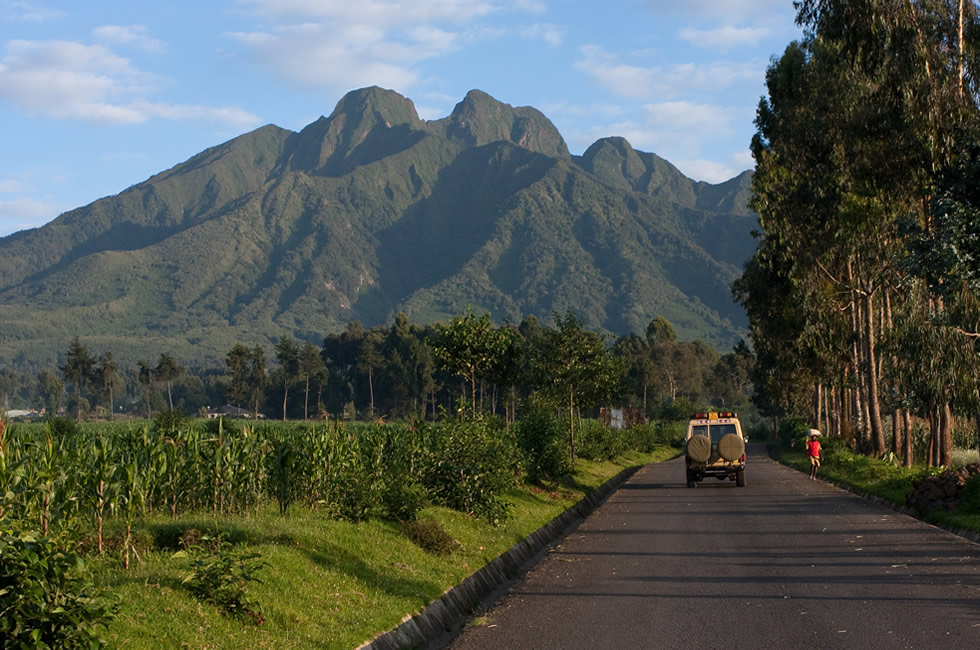On March 7, 2018, global tourism industry players, conservationists and government representatives, gathered in Berlin, Germany, for the annual ITB trade show.
During the trade fair, Rwanda was voted as one of the Top 100 Green Destinations in the World, courtesy of the Volcanoes National Park. However, one person who must have been smiling with a satisfied grin on his face when the winners were announced was Greg Bakunzi, the managing director of Amahoro Tours and founder of Red Rocks Cultural Centre, both travel concerns based in Musanze, northern Rwanda.
The long road to win his country the prestigious award started in earnest in 2016. Bakunzi says that as a member of Linking Tourism and Conservation (LTC) – a conservation non-profit headquartered in Norway – he received an invitation through the organisation to make a presentation about his country’s claim to be among the Top 100 Green Destination in the world.
LTC describes itself as an organisation that “seeks to create a network between relevant stakeholders in conservation, protected areas management, and tourism industry, which creates ideas, tools and incentives.” The organisation also seeks to find ways through which existing tourism support in existing protected areas can be replicated, exported and strengthened.
“I saw this as a great opportunity through which I could market my country in general – and the Volcanoes National Park in particular – so that the whole world could see or listen to what Rwanda is doing to ensure that the country not only becomes ‘green’ but also how it is positioning itself as a top travel destination,” says Bakunzi.
The Volcanoes National Park lies along the Virunga Mountains – a range of eight ancient volcanoes that are shared by Uganda, the Democratic Republic of Congo (DRC) and Rwanda.
The park is home to the Rwandan section of the Virungas that comprise five volcanoes and hosts about a quarter of the world’s remaining mountain gorillas. And aside from the iconic gorillas, various plant and animal species also thrive in the park.
Bakunzi made a presentation about how the government, together with private institutions in the tourism industry, is making concerted efforts to ensure that nature around the park is preserved.
“I made a presentation about how the Rwandan government is making sure that we protect our natural environment. Among the issues I discussed was Rwanda’s tree-planting initiatives, engagement of the local community and other development partners in various conservation initiatives, as well as the ban on plastic bags that’s gaining traction in environmental conservation,” says Bakunzi.
Bakunzi also credited the Volcanoes National Park’s ‘greenness’ to the Rwandan government’s responsible tourism initiatives, such as limiting the number of tourists who trek the park’s prized mountain gorillas.
Last year, Rwanda increased the price of gorilla permits from $750 to $1,500 in a move that aimed to “ensure sustainability of conservation initiatives and enhance visitors’ experience,” according to the Rwanda Development Board (RDB), the country’s tourism regulator.
Bakunzi says that during his presentation, he also had the chance to present before the tourism world the positive moves the Rwandan government is initiating to make sure that tourism develops as a leading industry in Rwanda.
He says he also had the chance to present how the government of Rwanda, through its tourism revenue sharing initiative, is working to conserve nature around the national parks.
Last year, the Rwanda Development Board (RDB) announced an increase in the tourism revenue sharing rate for communities living around national parks from 5% to 10%. The move was in line with Rwanda’s high-end tourism strategy to strengthen conservation efforts and contribute more to the social development of communities living around the country’s parks, RDB argued.
“Doubling the revenue sharing rate means that communities living around national parks will register more improvement in terms of development,” RDB said.
This year, the award event was targeting continents and during the official award ceremony that took place in Berlin on March 7, 2018 during ITB fair, Rwanda was voted as Africa’s Top 10 Green Destination, coming ahead of Botswana and South Africa.
